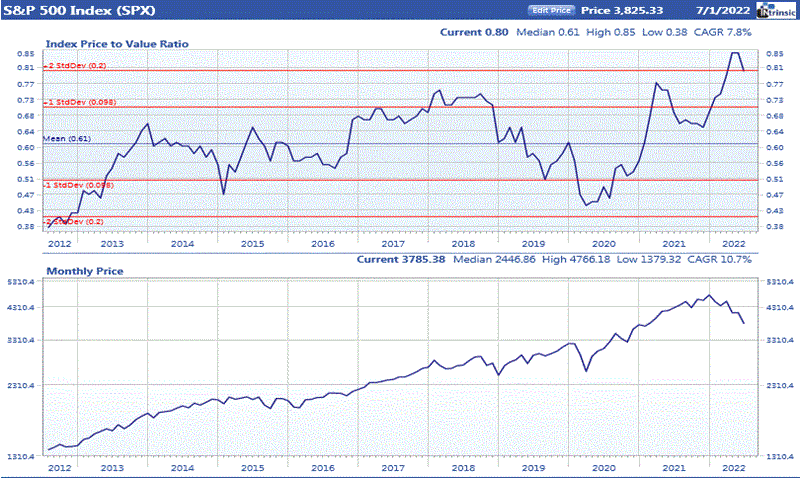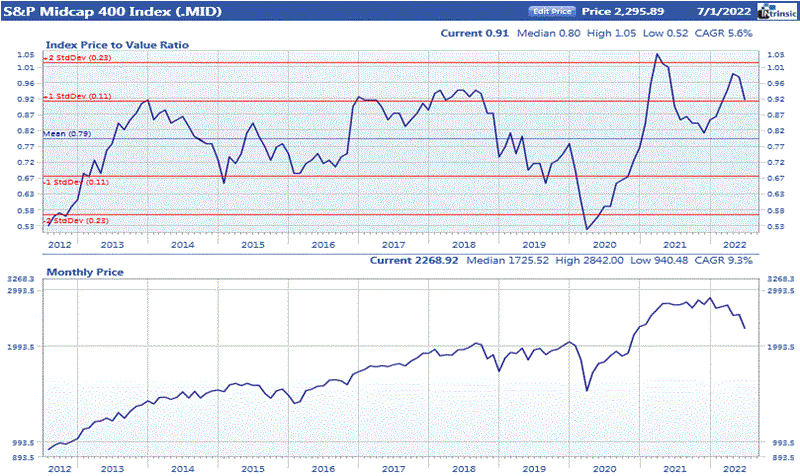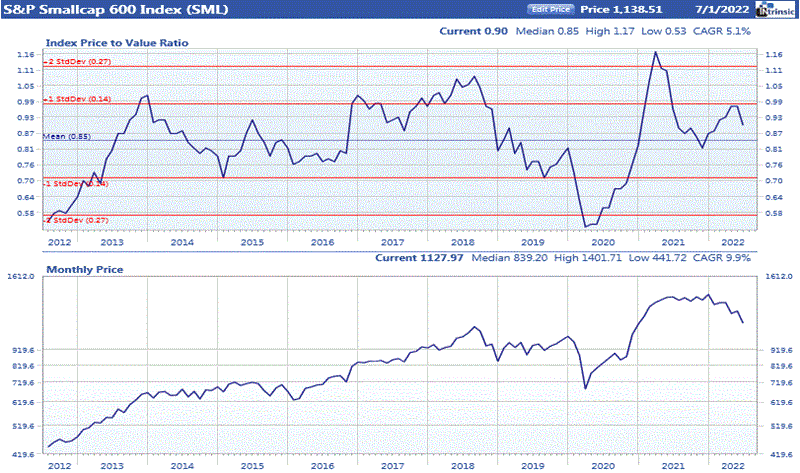Market Briefing
July 2022
U.S. equities suffered broad declines in June with losses extending across all capitalization sectors. The persistent high inflation and concerns that Fed rate hikes would cause a recession weighed heavily on stock prices. Although employment remained strong, some economic headlines pointed to a slowing economy. Factory orders came in below forecast, auto sales declined in May, and retail sales declined. Housing starts and existing home sales were also lower. CPI increased 8.6% in May. The Fed raised short-term rates by 75 basis points. Investors slightly favored longer-term growth over value factors during the month. Selection factors such as projected growth rate, 5-year sales growth, and 5-year dividend growth performed relatively better. Quality measures were also among the top performers. These included long-term debt/equity, net margin, and Ford Quality Rating. continued to seek out value stocks during the month. Shorter term growth measures, valuation ratios and price momentum were the worst performing factors in June. Sales growth in the past year and past quarter, 1-year eps growth, price/cash flow and price/sales were near the bottom of the selection factor list. The broad market selloff caused all but a handful of the industry groups we cover to post average price declines during the month. Consumer product groups made up many of the top performing groups. Trucking and railroads were also relatively good performers. The energy sector reversed from its recent strong performance with oil industry groups falling toward the bottom of the performance list. Materials groups were also weak including relatively worse average price performance for copper, aluminum, steel and forest products.
Value of the Market



Ford’s price to value ratio (PVA) is computed by dividing the price of a company’s stock by the value derived from a proprietary intrinsic value model. A PVA greater than 1.00 indicates that a company is overpriced while a PVA less than 1.00 implies that a stock is trading below the level justified by its earnings, quality rating, dividends, projected growth rate, and prevailing interest rates. While looking at the PVA for an individual company can give a good indication of its value, the average PVA for the market as a whole can provide insight into current valuation levels.
Source: Ford Equity Research
